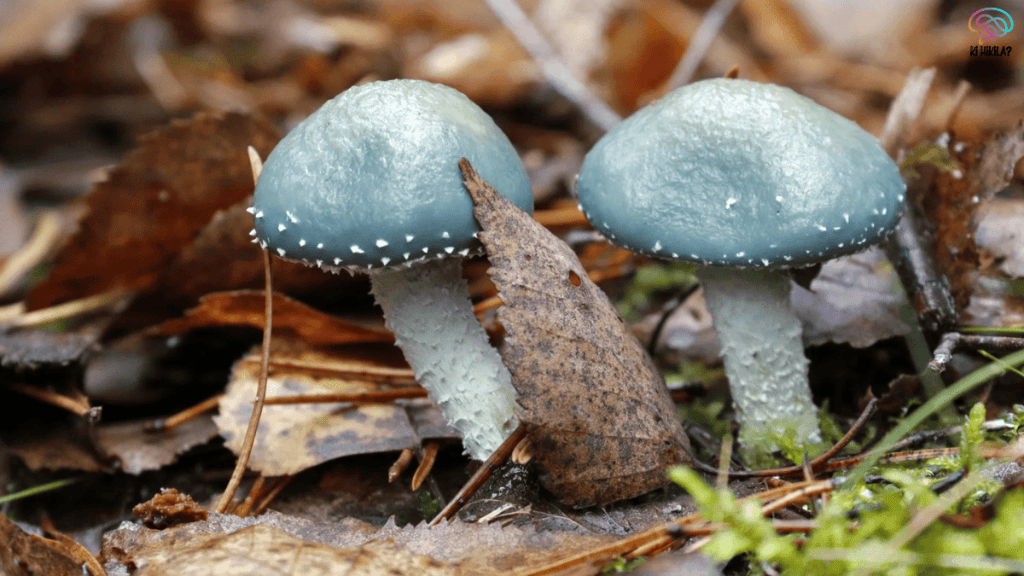Blue Pinkgill Mushroom discoveries in Telangana’s forests have sparked excitement among mycologists and conservationists. In the Kagaznagar forest division of Komaram Bheem Asifabad district, the vivid Blue Pinkgill mushroom (Entoloma hochstetteri), a species native to New Zealand, has been spotted forസ
System: The Blue Pinkgill Mushroom (Entoloma hochstetteri), a vibrant and rare fungus, has been discovered in the Kagaznagar forest division of Komaram Bheem Asifabad district, Telangana, marking a significant find for India’s fungal biodiversity. Known for its striking blue cap and pinkish gills, this mushroom, typically native to New Zealand, was spotted alongside the shuttlecock mushroom (Clathrus delicatus) in the Kawal Tiger Reserve, the latter being a first-time sighting in the Eastern Ghats. These discoveries highlight the rich ecological diversity of Telangana’s forests and underscore the importance of continued conservation efforts.
Characteristics of the Blue Pinkgill Mushroom
The Blue Pinkgill Mushroom, also known as the sky-blue mushroom, is easily recognizable by its brilliant blue cap and stem, a rarity in the fungal world. Its vibrant hue is attributed to unique azulene pigments, which are uncommon among fungi. The mushroom’s cap can range from flat to funnel-shaped, while its gills, which start white or pink, turn purplish due to maturing spores, producing a pink to salmon-colored spore print. These distinct features make identification straightforward and add to the mushroom’s allure as a remarkable find in Telangana.
Native Habitat and New Distribution

Typically found in New Zealand’s broadleaf forests, the Blue Pinkgill Mushroom thrives in environments rich in leaf litter, particularly during the monsoon season when high moisture and optimal soil conditions promote its growth. Its unexpected presence in Telangana’s Kagaznagar forest suggests that the region’s ecological conditions may mimic those of its native habitat. This discovery raises intriguing questions about how this species appeared so far from its usual range, possibly pointing to unique microclimates or ecological connections in Telangana’s forests.
Ecological Significance of the Findings
The sightings of the Blue Pinkgill Mushroom and the shuttlecock mushroom in Telangana’s forests reveal the region’s extraordinary fungal biodiversity. The shuttlecock mushroom’s presence in the Kawal Tiger Reserve extends its known range beyond the Western Ghats, challenging previous assumptions about its habitat preferences. These discoveries suggest ecological links between India’s mountain ranges and emphasize the importance of Telangana’s forests as a hotspot for fungal diversity. Such findings are critical for assessing the health of forest ecosystems and understanding the broader role of fungi in nutrient Cycling and decomposition.
Monsoon’s Role in Fungal Proliferation
Monsoon rains play a pivotal role in creating the moist, nutrient-rich conditions ideal for fungal growth. The seasonal deluge saturates forest floors, triggering the fruiting of mushrooms like the Blue Pinkgill and shuttlecock. This annual burst of colorful fungi reflects the cyclical nature of forest ecosystems, where fungi contribute to biodiversity by breaking down organic matter and recycling nutrients. The monsoon’s influence underscores the delicate balance of environmental factors that sustain such unique species in Telangana’s forests.
Scientific and Conservation Implications
The documentation of rare fungi like the Blue Pinkgill Mushroom and shuttlecock mushroom significantly advances mycological research in India. These findings provide valuable data for mapping species distribution and understanding ecological niches in understudied regions like Telangana. They also highlight the need for robust conservation strategies to protect these biodiverse forests, which harbor unique species and contribute to global ecological knowledge. Continued research and preservation efforts are essential to safeguard this fungal richness for future study.
A Call for Further Exploration
The discovery of the Blue Pinkgill Mushroom in Telangana is a testament to the hidden treasures within India’s forests. It signals the potential for further mycological discoveries in lesser-explored regions and emphasizes the need for sustained conservation efforts. By protecting these ecosystems, we ensure the preservation of unique species like the Blue Pinkgill and shuttlecock mushrooms, which not only enrich our understanding of biodiversity but also reflect the intricate ecological networks that sustain life. Telangana’s forests, now spotlighted by these findings, invite further exploration and appreciation of their ecological significance.